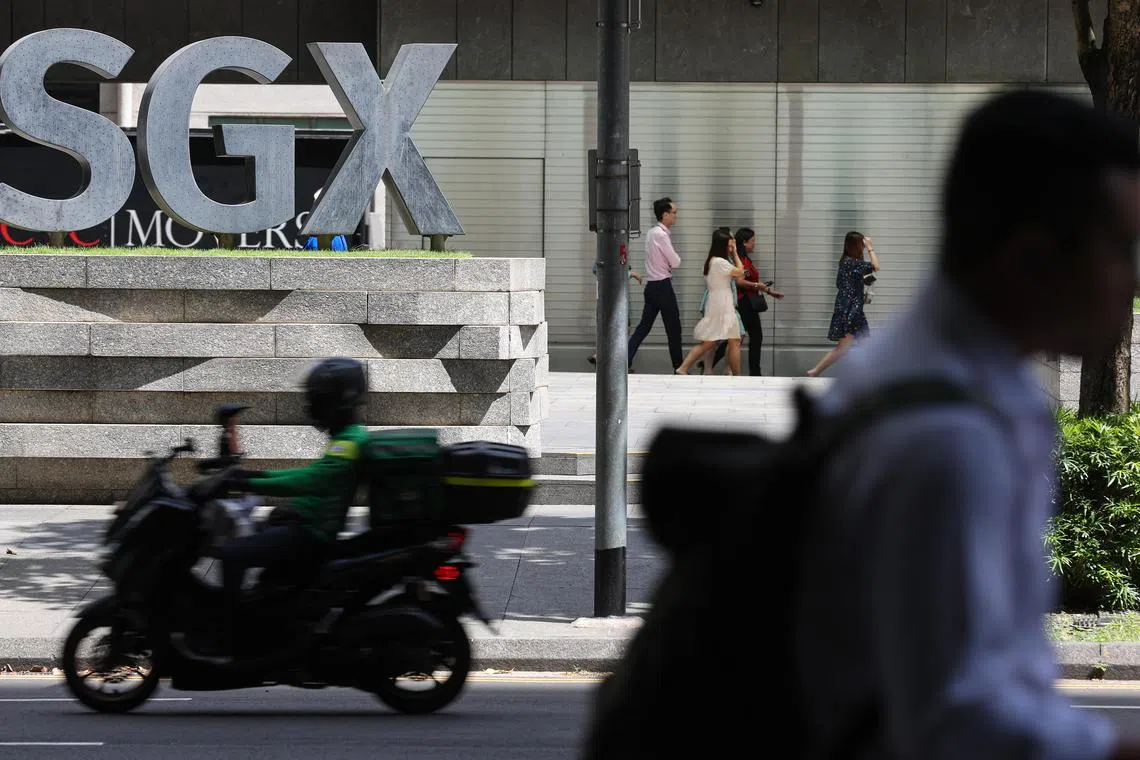Singapore stocks gain as Fed pauses rate hikes
Sign up now: Get ST's newsletters delivered to your inbox

On the local bourse, gainers outnumbered losers 352 to 219, with 1.6 billion securities worth $1.4 billion traded.
PHOTO: THE BUSINESS TIMES
Raphael Lim
Follow topic:
SINGAPORE – Quiet optimism over news that the United States has hit the pause button on interest rate hikes
There was also some help from Beijing, with more interest rate cuts in China
Traders here responded by sending the benchmark Straits Times Index (STI) up 0.8 per cent, or 24.71 points, to 3,242.85. In the broader market, gainers outstripped losers 352 to 219, with 1.6 billion shares worth $1.4 billion traded.
Elsewhere in the region, Japan’s Nikkei 225 and South Korea’s Kospi ended in the red, while key indexes in Hong Kong, Shanghai and Taiwan closed higher, following the US Federal Reserve’s decision on rates.
Australian shares rose a modest 0.19 per cent but that made it four consecutive days of gains – the bourse’s longest winning streak in more than two months.
SPI Asset Management managing partner Stephen Innes said the Fed’s decision to move further on rates, either up or down, will likely be swayed by inflation and growth numbers.
Interestingly, growth data has been improving, suggesting more hikes may be necessary, while inflation has been decelerating, suggesting fewer hikes are necessary, he added.
“Most (Federal Open Market Committee) members predict the need for higher rates from here, suggesting that the balance of growth and inflation may not yet be optimal,” he said.
Investors continued to buy Singapore Airline shares, sending the counter up for a 12th straight day. It rose 4.1 per cent to $7.91, and was the most actively traded by value, with 27.5 million shares worth $215 million changing hands.
Keppel Corp led the STI gainers, surging 5.4 per cent to $7.05. Other top performers included Mapletree Logistics Trust and Venture Corp, which both rose 3.6 per cent.
ST Engineering fell 0.8 per cent to close at $3.68, landing at the bottom of the index performance table. THE BUSINESS TIMES

